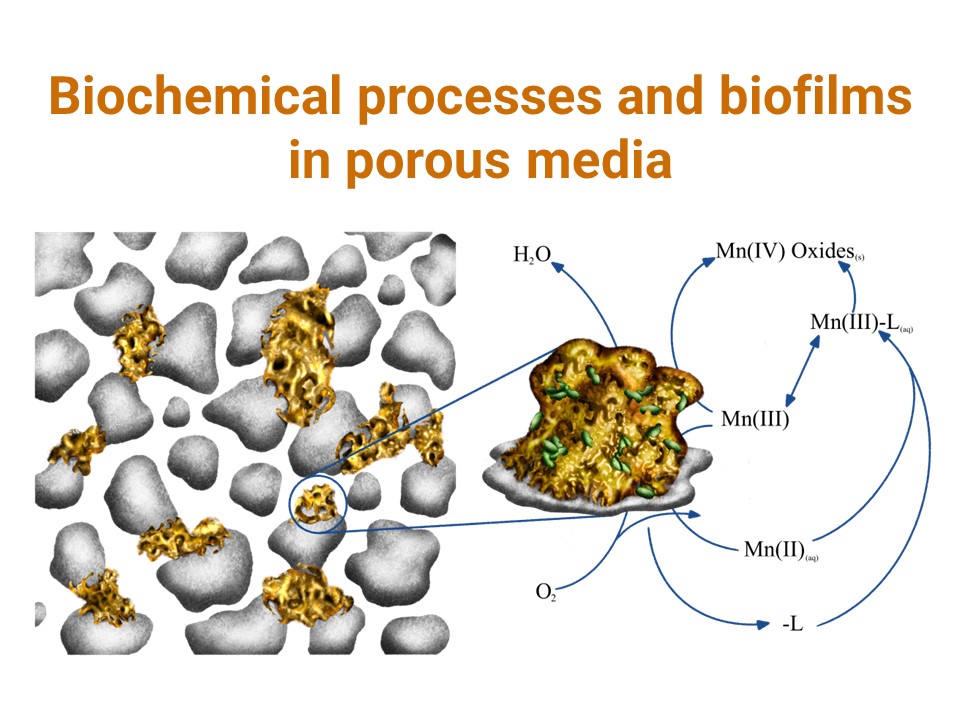(MS01) Porous Media for a Green World: Energy & Climate

- Hamed Aslannejad - University of Utrecht, Netherlands
- Lauren Beckingham - Auburn University, USA
- Maartje Boon - TU Delft, Netherlands
- Brian Ellis - University of Michigan, USA
- Anna Herring - Australian National University, Australia
- Hans Janssen - KU Leuven, Belgium
- Kai Li - TU Delft, Netherlands
- William Rossen - TU Delft, Netherlands
- Yuhang Wang - China University of Geosciences, China
Porous media science and engineering has played an important historical role in the development of the current global energy system through the production of oil, natural gas, and coal. Unfortunately, combustion of the produced fuels has led to the current climate and carbon problem, prompting the urgent need to transition to a low carbon future. While renewables such as wind and solar will play a major role in the energy transition, creative uses of natural and engineered porous media will also be a critical part of any viable low carbon energy system. Because fossil fuels will form a significant part of the foreseeable future energy mix, CO2 capture and subsequent subsurface storage must play a major role in both direct carbon-capture-and-storage (CCS) projects and in negative emissions scenarios like Bio-Energy with CCS, or BECCS. In addition to large-scale carbon storage, more creative uses of porous media also need to be developed, including creative subsurface energy storage schemes to deal with intermittency of renewables, and novel capture technologies in engineered systems as well as naturally reactive rocks. These capturing technologies also include reactive transport mechanisms for energy storage. In addition, geothermal energy production is expected to increase its contribution in the future energy mix. In all of these activities, safety and risk assessments are very important, so that societal concerns such as induced-seismicity and surface subsidence (and uplift) are managed properly. In this session, we invite contributions on all aspects of utilization of porous media for energy and climate-driven activities. This can include improved methods for oil and gas production, all aspects of CCS systems including storage in reactive rock systems as well as negative emissions involving BECCS, and new methods for subsurface energy storage including those that complement traditional wind and solar. We especially invite collaborative efforts involving scientists, engineers and technology developers to contribute to our mini-symposium.
(MS02) Porous Media for a Green World: Water & Agriculture
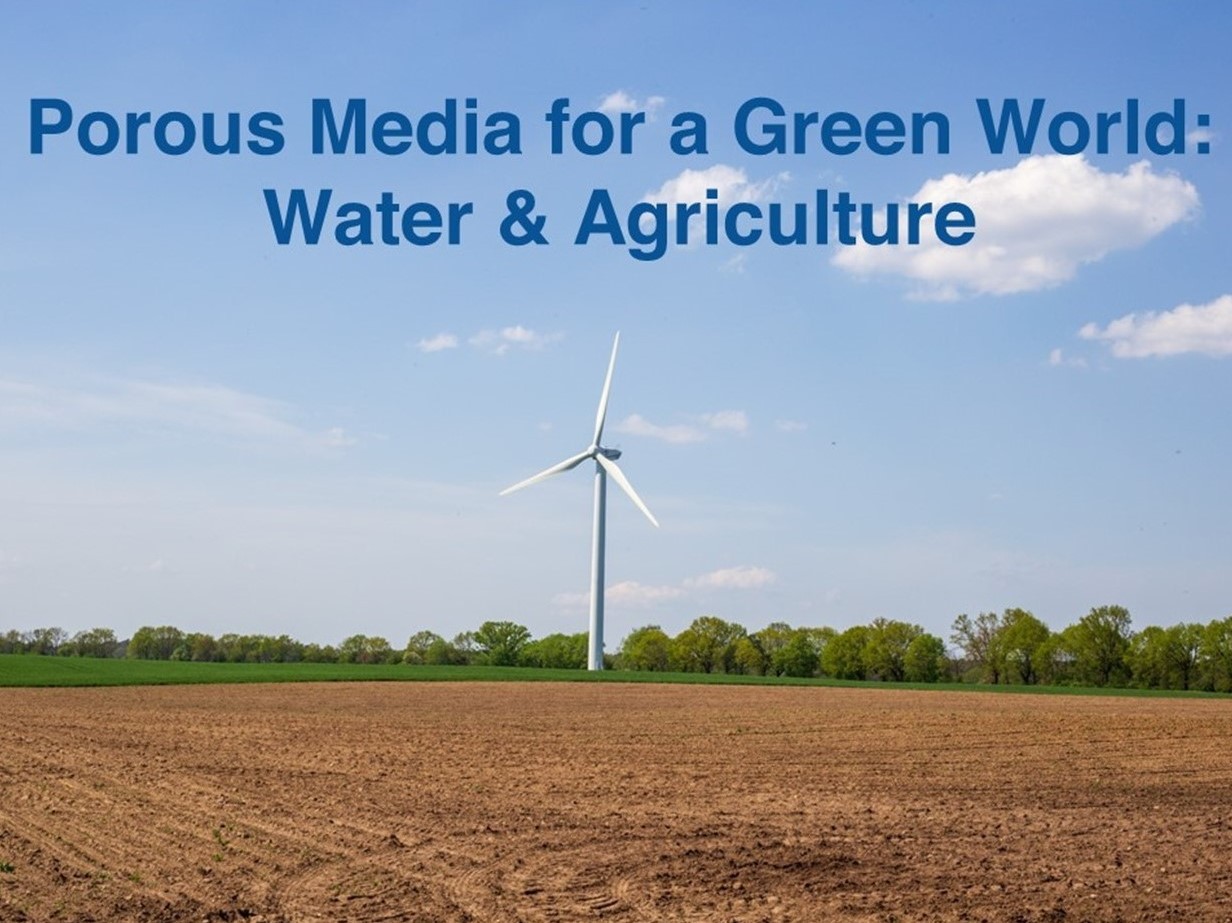
- Milad Aminzadeh - Institute of Geo-Hydroinformatics, Hamburg University of Technology, Germany
- Li Chen - Nanjing University of Information Science and Technology, China
- Steven Jansen - Ulm University, Germany
- Nima Shokri - Institute of Geo-Hydroinformatics, Hamburg University of Technology, Germany
- Jan Vanderborght - Forschungszentrum Jülich, Germany
Sustainable use of soil and water resources is crucial to preserve healthy terrestrial ecosystems and maintaining food security. Many of the scientific and technical challenges related to these issues hinge on understanding, controlling and optimizing processes that involve the multiscale (in both space and time) dynamics of water and nutrients in the soil-plant system, arguably the porous medium ‘par excellence’. With this theme in mind, this mini-symposium aims to bring together contributions on the physics, chemistry and biology of porous media with emphasis on applications to the ecohydrology and biogeochemistry of ecosystems. Fundamental research on these interdisciplinary topics will provide guidance and novel solutions to improve human actions on sustainable natural resource management, and reduce their potential negative impacts. Of particular interest are long-lasting environmental repercussions of water and soil management and the elements of irreversibility on the microscale structure of soils in relation to soil degradation and salinization, groundwater dynamics, carbon and nutrient retention, which in turn affect plant productivity and ultimately ecosystem resilience and human welfare. We welcome contributions toward optimal land-use management for sustainable use of terrestrial environments and quantitative analysis of the effectiveness of applied human strategies on ecosystem management for food and water supply security.
(MS03) Flow, transport and mechanics in fractured porous media
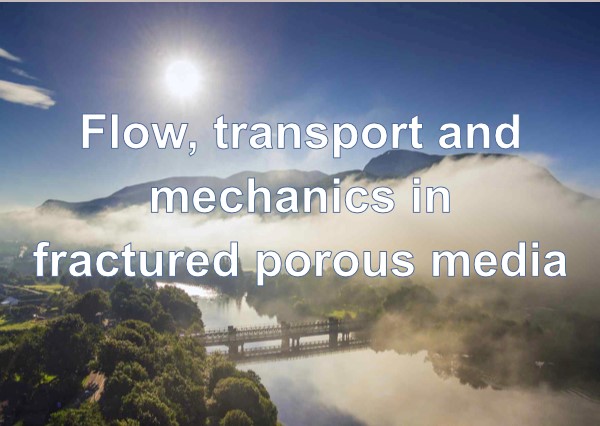
- Jeffrey Hyman - Los Alamos National Laboratory, USA
- Olav Moyner - SINTEF, Norway
- Hamid Nick - Technical University of Denmark, Denmark
- Holger Steeb - Institut für Mechanik University Stuttgart, Germany
- Hongkyu Yoon - Sandia National Laboratories, USA
In modeling of flow, (multiphase) transport and mechanics in fractured porous media, challenges are related to the fractured structure’s impact on the processes and/or the processes’ impact on the fractured structure. Fractures may, for example, totally dominate flow-processes, and, vice versa, flow processes may alter the fractured structure of the medium, causing fractures to deform, slip and/or propagate. This mini-symposia invites presentations on advances within mathematical and numerical modeling and experimental work related to flow, transport, chemical and mechanical processes in fractured porous media.
(MS04) Swelling and shrinking porous media
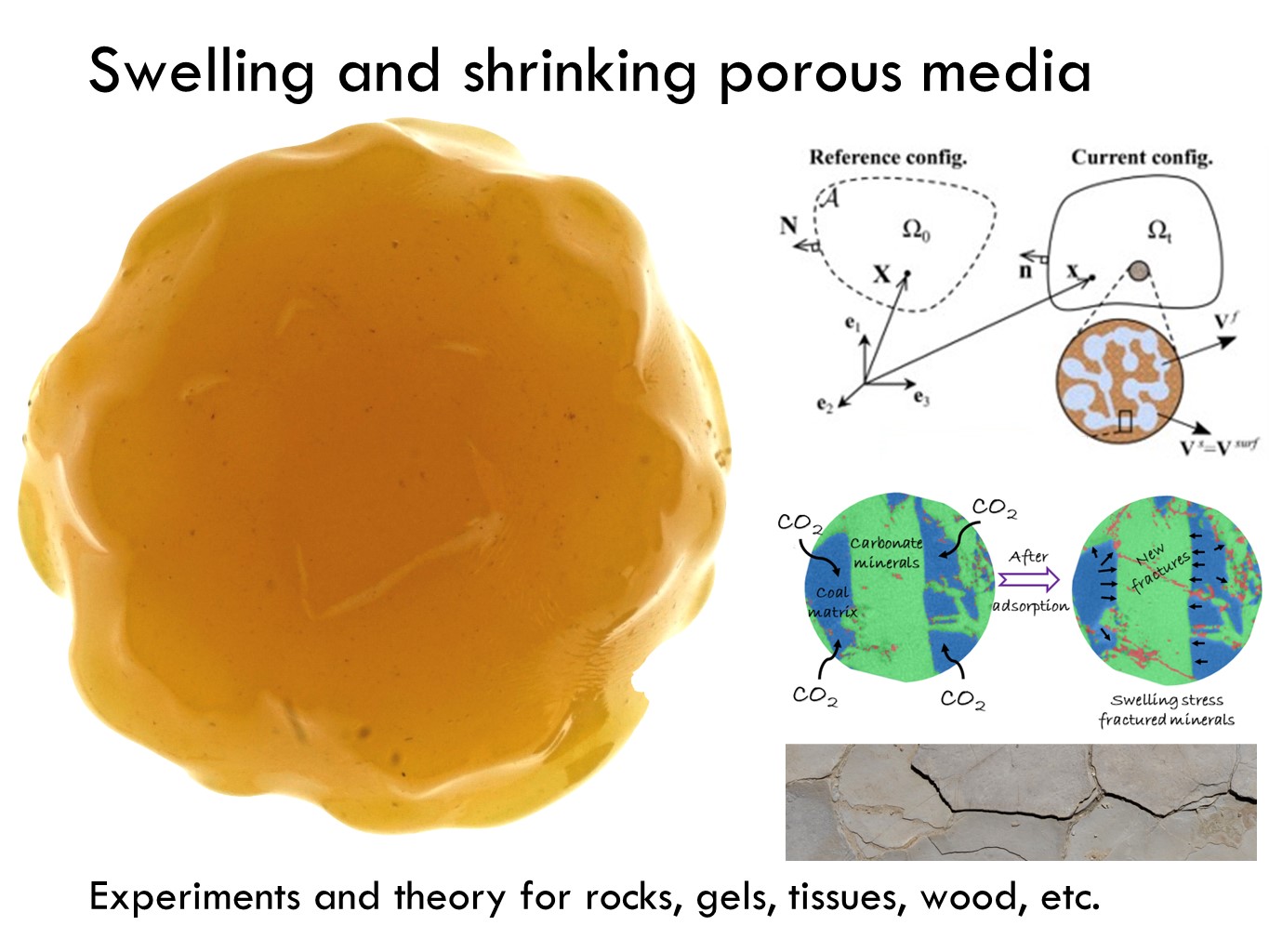
- Daniel Markl - University of Strathclyde, UK
- Chris MacMinn - University of Oxford, UK
- Sridhar Ranganathan - Kimberly-Clark, USA
- Yida Zhang - University of Colorado Boulder, USA
- Yihuai Zhang - University of Glasgow, UK
Many porous media, from soils and clays to gels and tissues, will swell or shrink in response to thermal, mechanical, or chemical stimuli. The coupling between flow and deformation during swelling/shrinking can give rise to a variety of complex phenomena, including changes in mechanical or transport properties, changes in size or shape, and the formation of fracture or wrinkle patterns. The goal of this mini-symposium will be to highlight new experiments that provide direct visualization and characterization of these phenomena, as well as new theories that harness the output of these tools to better model flow and transport during swelling/shrinking. Particular emphasis will be given to studies that provide a direct comparison between theoretical predictions and experimental results.
(MS05) Biochemical processes and biofilms in porous media
- Roseanne Ford - University of Virginia, USA
- Veronica Morales - University of California, Davis, USA
- Eleonora Secchi - ETH Zurich, Switzerland
Biochemical processes, including microbially driven mineral precipitation and biofilm accumulation and activity, can impact reactive mass transport and material properties of porous media. We invite contributors to present and discuss results from microbial, enzymatic and temperature driven experimental and simulation modeling studies, at various scales of observation, which highlight recent advances in this overall theme area. For example, microbially induced carbonate precipitation (MICP) is being applied for permeability modification, e.g. improving well-bore cement integrity and fracture sealing, in the deep subsurface along with improving soil strength and stiffness in the shallow subsurface. Improved understanding of basic biofilm process including cell attachment, growth, detachment and cell transport is needed for applications such as controlling soil clogging and improving bioremediation of organics, metals and radionuclides. Other relevant topics include engineered biogenic gas production and its effects on porous materials along with further understanding of the formation, retention, transport, and performance of biochemical reaction products and by-products in both shallow and deep subsurface applications. Case studies are encouraged along with studies which combine experimentation and simulation model development.
(MS06-A) Physics of multiphase flow in diverse porous media
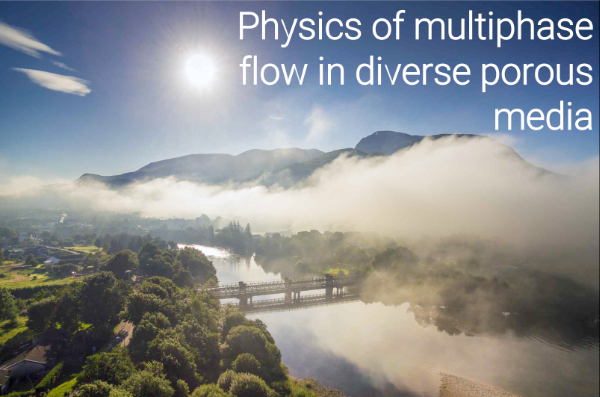
- Ryan Armstrong - University of New South Wales Sydney, Australia
- Saman Aryana - University of Wyoming, USA
- Yaniv Edery - Technion - Israel Institute of Technology, Israel
- Ying Gao - Shell, The Netherlands
- Yu Jing - University of New South Wales, Australia
- Signe Kjelstrup - Norwegian University of Science and Technology, Norway
- Mohamad Masoudi - University of Oslo, Norway
Multiphase flow in porous media is significant to many applications ranging from: subsurface and near-surface flow processes, that are operative in petroleum engineering, carbon storage and utilization, remediation of soil contamination, soil physics and hydrogeology. To applications in material science, such as membranes and fuel cells. In all these applications, it is often desirable to establish relationships between microstructural and surface properties of the media, fluid properties, and Darcy scale effective properties. Much of the past research has focused on description of multiphase flow behavior at the Darcy scale, with purely phenomenological links to microscopic system properties. Translating the various physics that dominate transport at each scale across the range of scales remains a significant challenge.
Thanks to progress in imaging and numerical modelling in the past decade, our understanding of the physics of transport at the pore and meso-scale has improved tremendously. The purpose of this minisymposium is to provide forum to share and explore recent insights into multiphase displacement physics through experiments, modelling and theory development. Examples of potential topics of interest include the following.
• Characterization of transport across length and time scales, ranging from pore to Darcy scale. Applications include, remediation of contaminated soils and aquifers or geological storage of CO2 as part of carbon capture utilization and storage operations.
• Exploration of the basis set of REV variables needed for thermodynamic integration across scales.
• Development of frameworks for upscaling (nano-scale to pore-scale, pore-scale to Darcy-scale). Frameworks may include reactive transport, geomechanics and/or multiphase multicomponent flows.
• Descriptions and applications of flexible materials, complex / non-Newtonian fluids, and spatially heterogeneous wettability conditions.
• Applications to model and investigate spatially heterogeneous wettability conditions.
• Applications involving complex / non-Newtonian fluids.
• Investigation of pore-scale physics and upscaling of dynamic capillary effects.
• Studying the effects of sub-pore and pore-scale scale spatial heterogeneity and complex micro-structure that influence macro-scale, multiphase flows.
(MS06-B) Interfacial phenomena across scales
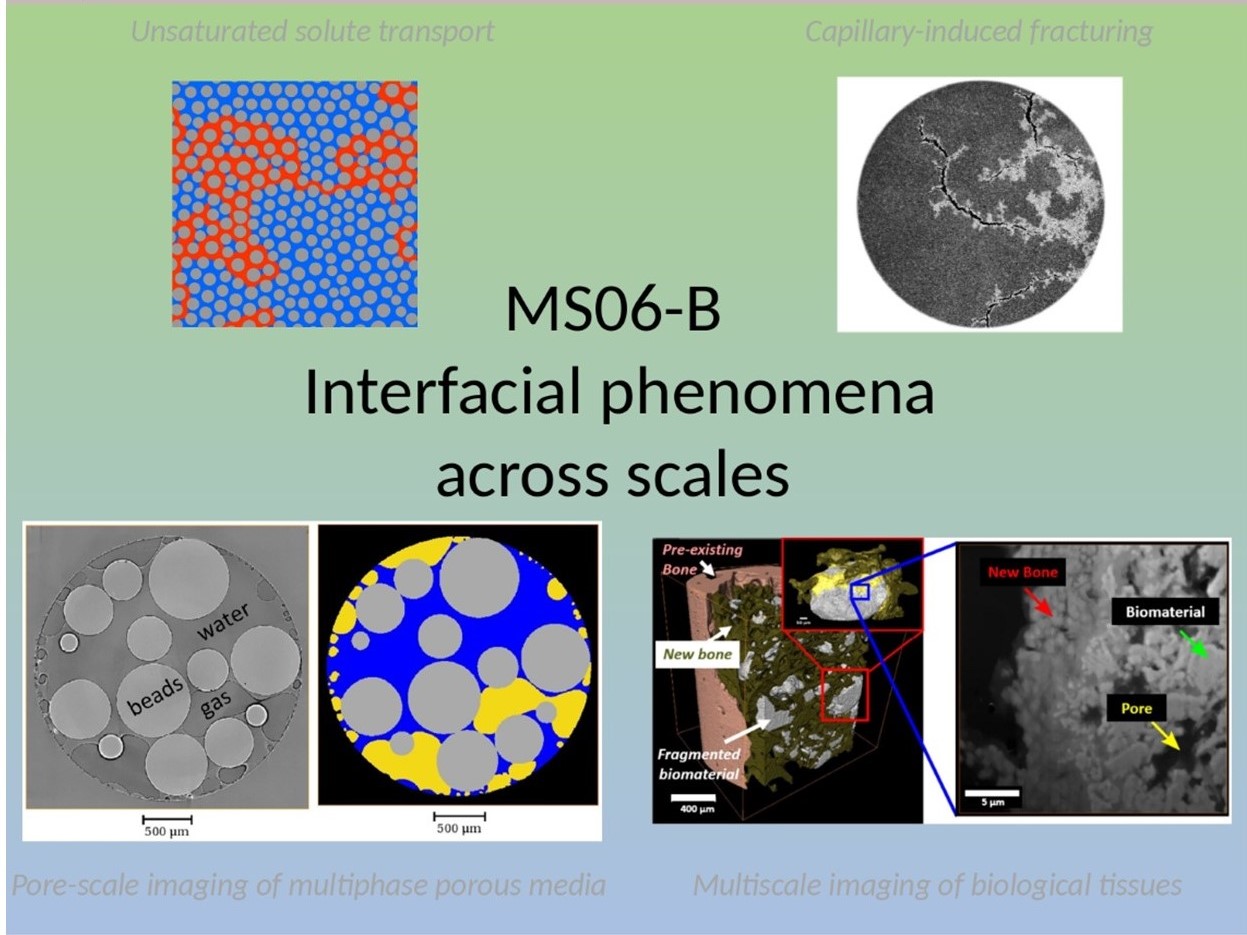
- Ran Holtzman - Coventry University, UK
- Kamaljit Singh - Heriot-Watt University, UK
- Oshri Borgman - MIGAL - Galilee Research Institute, Israel
- Subhadeep Roy - The Institute of Mathematical Sciences, India
- Nathaly Lopes Archilha - Brazilian Synchrotron Light Laboratory, Brazil
- Eduardo Abreu - University of Campinas - Unicamp, Brazil
The existence of fluid-fluid and fluid-solid interfaces introduces a plethora of coupled physical, chemical, and biological phenomena which are key to multiphase flow in heterogeneous porous materials. While the interfaces are microscopic, they can control flows at the kilometer scale. The challenge of understanding the underlying rich physics is essential in many applications in geosciences and engineering. Examples range from small-scale industrial processes such as filtering, separation, coating or curing to large-scale transport of water, nutrients and contaminants in soils, extraction of hydrocarbons from and storage of carbon or energy in sediments, among others. We aim to bring together scientists across disciplines and with various expertise (numerical, experimental, and theoretical modeling) to share their state-of-the-art findings and challenges in this mini-symposium.
(MS07) Mathematical and numerical methods for multi-scale multi-physics, nonlinear coupled processes
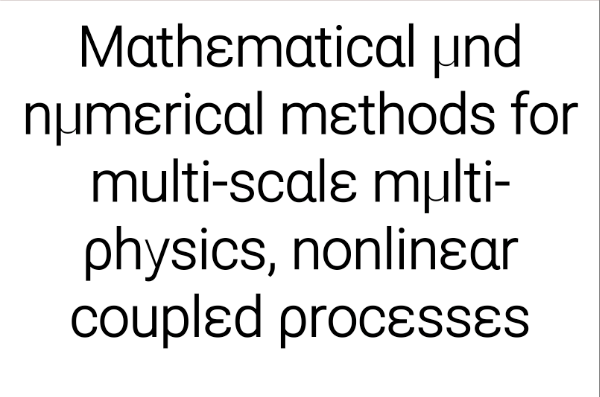
- Jakub Both - University of Bergen, Norway
- Huangxin Chen - Xiamen University, China
- Nadja Ray - University of Erlangen-Nuremberg, Germany
- Shuyu Sun - King Abdullah University of Science and Technology, Saudi Arabia
Various applications of societal and technological relevance involve flow, (multi-phase) transport, deformation or reaction in natural (e.g. geological) or synthetic porous media. These applications are broad: from energy and environment to biosystems and high-tech materials. In many of these situations, experiments (or field observations) are either extremely costly (or even impossible) or they are required to be complemented with models and simulations. In this context, mathematical and numerical simulation methods are key tools for understanding processes as named above. When designing efficient simulation methods, at least two major challenges appear. The first is related to the fact that the mathematical models are coupled systems of highly nonlinear equations, and the second is due to the high complexity associated with porous media, e.g., highly heterogeneous properties with scale separation (often for fabricated porous materials) and without scale separation (often with natural real-world porous media). The dynamic coupling of processes taking place at different scales (from micro to macro) also motivates the needs to account for all such multiscale aspects in the development of accurate mathematical and numerical methods. In this mini-symposium, we invite contributions related to the development of “advanced mathematical models and related analyses” and “advanced numerical methods” including “advanced discretization methods” and “multiscale multilevel model order reduction techniques (multiscale methods, homogenization and upscaling, etc.) ”, “topological model reduction for embedded inclusions” (applied e.g. to fractures and wells), and “advanced nonlinear and linear solution strategies” for multi-scale, multi-component and multi-physics processes in porous media.
(MS08) Mixing, dispersion and reaction processes across scales in heterogeneous and fractured media
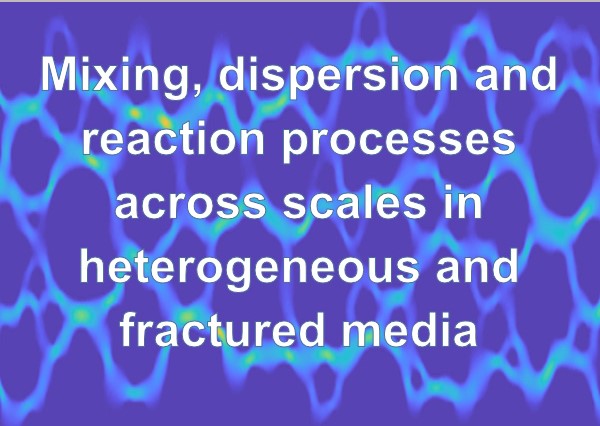
- Branko Bijeljic - Imperial College London, UK
- Marco Dentz - Spanish National Research Council, Spain
- Mohammad Nooraiepour - University of Oslo, Norway
- Mozhdeh Sajjadi - University of Tehran, Iran
- Amir Raoof - Universiteit Utrecht, The Netherlands
- Qingwang Yuan - Texas Tech University, USA
An in-depth understanding of solute mixing and reactive transport is key in engineered and natural porous media with applications ranging from the design of porous reactors to diffusion in human tissue to geothermal heat production and groundwater management. Spatial heterogeneity in pore and Darcy scale medium and flow properties leads to scale effects in system parameters (e.g., hydraulic conductivity, dispersion coefficients, chemical rate constants) and emerging large scale processes (e.g., anomalous diffusion, memory reactions, mechanical mixing) due to the interaction of small scale processes, segregation and mass transfer across heterogeneity-induced interfaces. Recent advances in experimental and theoretical approaches have shed new light into the pore and Darcy-scale mechanisms that govern these processes and their large scale quantification. This session addresses a diverse group of researchers investigating Eulerian and Lagrangian flow properties, solute and particle transport, and mixing and reaction phenomena under spatial heterogeneity in fluids at rest and under single, multiphase and variable density flows on the pore and Darcy scales. It aims to bring together experimental observations from the lab to the field scale with theory and numerical simulations to advance our understanding of heterogeneity-induced mixing, transport and chemical reaction dynamics over a large range of spatial and temporal scales.
(MS09) Pore-scale modelling
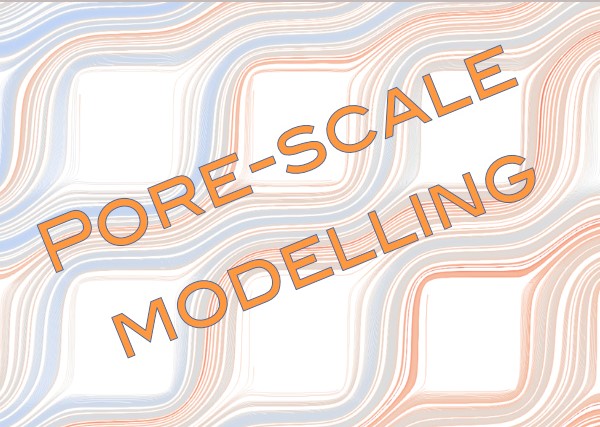
- Bo Guo - University of Arizona, USA
- Yashar Mehmani - The Pennsylvania State University, USA
- Moran Wang - Tsinghua University, China
- Chiyu Xie - University of Science and Technology Beijing, China
- Ke Xu - Peking University, China
- Yongfei Yang - China University of Petroleum, China
- Stéphane Zaleski - Sorbonne Université, France
Modeling the physics of fluid flow and mechanical deformation is necessary to untangle the sequence of events that occurs within porous materials. Recent decades have shown a dramatic increase in interest to study and apply porous media science in various aspects of energy and environmental engineering. Groundwater remediation, geothermal energy, CO2 storage, natural gas recovery, and fuel cells are a few examples. Sustainable engineering of each one of these systems requires a microscale understanding with which one can make predictions. Pore-scale modeling is the tool to do just that. Here we solicit contributions on all aspects of pore-scale modeling with a particular emphasis on:
• novel algorithms and computational methods
• validation of models against experiments
• new physical insights and theoretical analyses
• upscaling pore-scale results into continuum-scale descriptions
Examples of specific areas include – but are not limited to – numerical methods (pore networks, lattice Boltzmann, direct numerical simulation, phase field, level set), discretization (finite volume, finite element, finite difference, particle-based), flow physics (Newtonian, non-Newtonian, single/multi-phase), passive/reactive transport (dissolution, precipitation, dispersion, mixing), mechanics (discrete element, failure, granular flow, plasticity), solvers and approximators (multiscale methods), hybrid computing (pore-to-Darcy coupling, addressing scale separation).
(MS10) Advances in imaging porous media: techniques, software and case studies

- Martin Blunt - Imperial College London, UK
- Marijn Boone - Tescan, Belgium
- Matthijs de Winter - Utrecht University, The Netherlands
- Eseosa Ekanem - Imperial College London, UK
- Maja Rucker - Eindhoven University of Technology, The Netherlands
- Lin Ma - University of Manchester, UK
- Liwei Zhang - Chinese Academy of Sciences, China
For many years, 3D imaging techniques have been applied for material characterization. The last decade, several advanced imaging techniques have been developing at a high speed both on the hardware and the software side. Because of this development and their added value, they are intensively used to study porous media for their characterization as well as to study the various processes occurring inside porous media. For this mini-symposium we invite contributions that focus on advancements in 3D imaging techniques or 3D analysis software to study porous media as well as contributions that integrate these new developments in experiments and real case-studies.
(MS11) Microfluidics and nanofluidics in porous systems
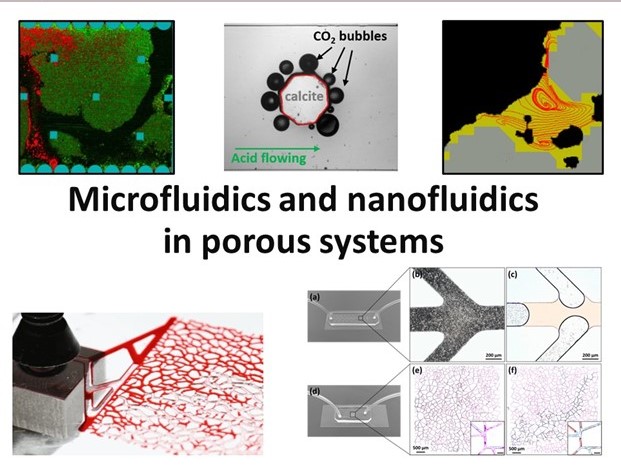
- Hossein Hejazi - University of Calgary, Canada
- Helge Hellevang - University of Oslo, Norway
- Hassan Mahani - Sharif University of Technology, Iran
- Sophie Roman - Université d'Orléans, France
Porous media research spans a very wide range of physical length scales: from micrometer up to the km scale. However to address the large scale applications mostly the Darcy scale theories are used which are heavily based on the (upscaled) constitutive relations. Validity of the continuum-scale theories (e.g. Darcy's law for two-phase flow) have been seriously challenged in the recent two decades through microscale experimental and computational research. Despite several studies have been done, the impact of small, pore scale, processes on the larger scale, where system is continuous (Darcy and field scale), is still challenging and current models must be improved. Microfluidics systems greatly improve our current understanding of small scale processes taking place within tiny fluid volumes, like drops (e.g. picoliter or nanoliter), moving within well-defined geometries with controlled properties (like size, wettability, shape). Recently, such technology has been also applied for the investigation of more complex media characterized by the presence of obstacles mimicking porous materials. This mini-symposium aims to gather researchers with interest in the use of microfluidics devices for the investigation of pore-scale processes that take place at the scale of individual pores in permeable media in order to highlight our understanding of their impact on the larger size phenomena such as solutes mixing, reactive transport, electrokinetic effects and charged systems, colloids transport and filtration, microorganisms growth or mineral aggregates formation.
(MS12) Advances in Computational and Experimental Poromechanics
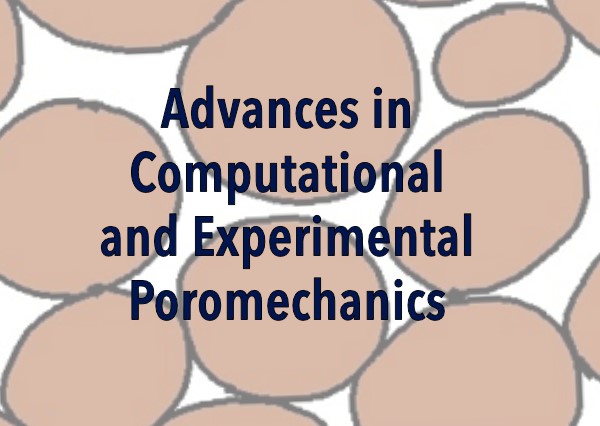
- Jianchao Cai - China University of Petroleum, China
- Rich Chalaturnyk - University of Alberta, Canada
- Sebastian Geiger - TUDelft, The Netherlands
- Amir Haghi - CGG, Canada
- Xiaozhe Hu - Tufts University, USA
- Florin A. Radu - University of Bergen, Norway
- Joshua White - Lawrence Livermore National Laboratory, USA
In the past decade, numerical simulation and experimental characterization of physical interactions between mechanical deformation and fluid flow in porous media (i.e., poromechanical interaction) have become increasingly crucial in several branches of technology and natural sciences. Poromechanical interaction is a ubiquitous phenomenon in nature, and it has a prominent influence on fluid transport via living cells and tissues, plant movements, and magma propagation. Among typical societal relevant applications of poromechanics, we mention geothermal energy extraction, CO2 sequestration, energy subsurface storage, hydraulic fracturing, and cancer research. In this mini-symposium, we will address recent developments in numerical solvers for poromechanics, e.g. iterative and monolithic schemes, multigrid, efficient preconditioners and (stable/multiscale/mass conservative) discretization methods. At the same time, new trends in the mathematical modelling of poromechanics will be discussed. Especially, non-linear or non-stationary extensions of Biot equations, multiphase and reactive flow in deformable porous media, thermo-poroelasticity and the inclusion of fractures will be of interest. In addition, this mini-symposium will highlight experimental advances in poromechanics using creative laboratory designs and advanced visualization approaches (e.g., integrated scanning, in-situ heating, and triaxial loading tests) under complex thermo-hydro-mechanical conditions. These experimental observations aim to improve our understanding of the poromechanical controls on single-phase and multiphase fluid flow in natural and artificial (3D printed, microfluidics) porous materials and fractures.
(MS13) Fluids in Nanoporous Media
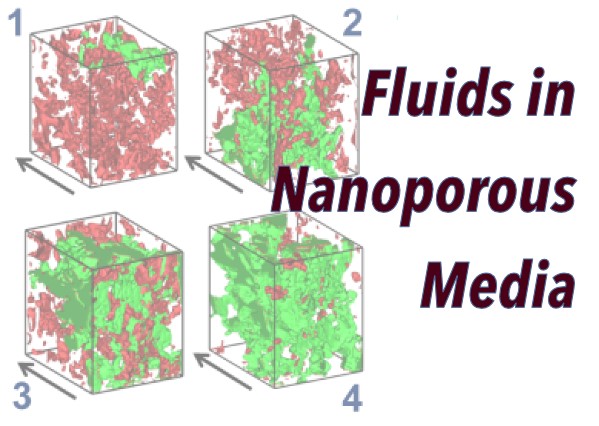
- Elizabeth Barsotti - University of Cambridge, UK
- Bin Pan - University of Science and Technology Beijing, China
- Ahmad Sakhaee-Pour - University of Houston, USA
Many porous media have characteristic pore sizes in the nanometer range. These media include natural materials (clays, coal, and shale), concrete, as well as synthetic materials used for separation, purification, and energy storage. In most natural or technological processes the pores in these materials contain fluids: water in clays and concrete, hydrocarbons in coal and shale, etc. In nanopore-confined fluid, tight spatial confinement and solid-fluid interactions may significantly alter the fluid's physical properties, causing, for example, the molecular structuring of the fluid, shifts of the freezing or evaporation points and the appearance of the disjoining pressure. These pore-scale effects necessarily lead to a change in the parameters of continuum models for fluid transport in nanoporous media and poromechanics; moreover, they often require introducing new physics in the governing equations. The objective of this minisymposium is to provide a forum for the discussion of all possible aspects of fluid phases confined in nanoporous materials: fundamental and applied, theoretical and experimental.
(MS14) Uncertainty Quantification in Porous Media
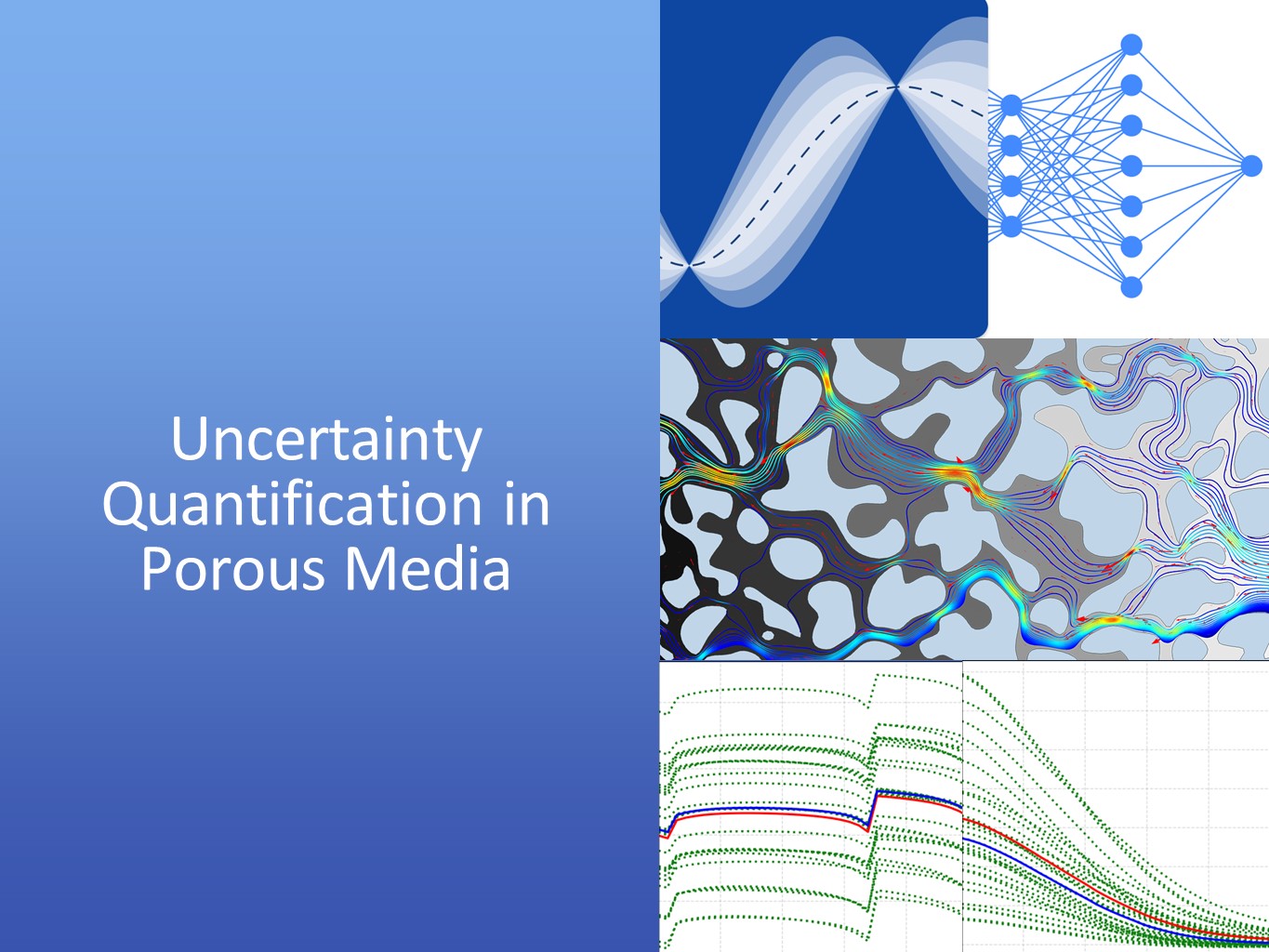
- Michele Botti - Politecnico di Milano, Italy
- Ben Mansour Dia - King Fahd University of Petroleum and Minerals, Saudi Arabia
- Rodrigo Weber dos Santos - Federal University of Juiz de Fora, Brazil
- Mina Karimi - California Institute of Technology, USA
The goal of this mini-symposium is to provide a forum for discussion of common themes that arise in the application of stochastic (e.g., Markov chain Monte Carlo (McMC)) and deterministic (e.g. Adjoint formulation) uncertainty quantification (UQ) methods for porous media. We welcome UQ methods for all porous media applications, including flow in porous media and geophysics. We aim for a multi-disciplinary mini-symposium that forms a basis for cross-discipline discussions of new findings, challenges, and methods forward. We welcome contributions on HPC, machine learning, and multiscale methods that aim at speeding up computations related to UQ.
(MS15) Machine Learning and Big Data in Porous Media

- Bailian Chen - Los Alamos National Laboratory, USA
- Teeratorn Kadeethum - Sandia National Laboratories, USA
- Pania Newell - University of Utah, USA
- Jianchun Xu - China University of Petroleum, China
- Hongkyu Yoon - Sandia National Laboratories, USA
Recent advances in computer and data sciences have made machine learning (ML) techniques a frontier in porous media-related research. As a result, classical challenges in porous media are being addressed with new techniques based on ML. The aim of this mini-symposium is to present the recent results of new ML methods and introduce new directions in porous media-related research to researchers in our community. This session seeks abstracts in the following topics: 1) recent advances in ML algorithms (including deep learning architectures, physics-informed ML, self-supervised/un-supervised ML, transferability, interpretability) with applications to porous media; 2) development of computationally fast proxy models, reduced order models or predictive empirical models using ML to address issues of interest in porous media; 3) other ML-/big data-related applications or developments (e.g., upscaling, multiscale analysis, porous media generation, imaging analysis, coupled processes) in porous media.
(MS16) Fluid Interactions with Thin Porous Media
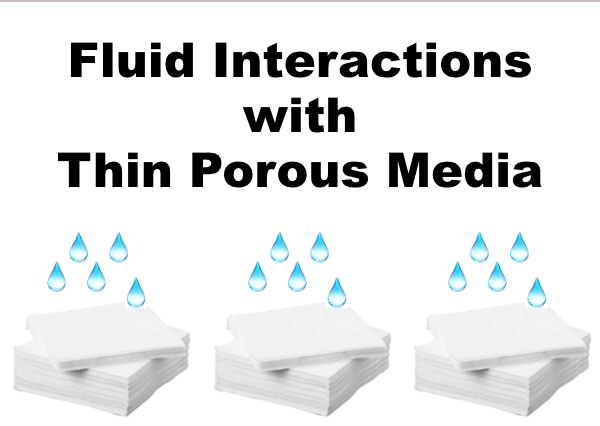
- Richmond Cohen - Kimberly-Clark Corporation, USA
- Dwayne Jackson - Kimberly-Clark Corporation, USA
- Satoru Katoh - Toyota Central R&D Labs, Japan
- Chaozhong Qin - Laboratory of Coal Mine Disaster Dynamics and Control Chongqing University, China
Thin porous media are extensively used in paper industry, fuel cell development, printing technologies, packaging, etc. Their diversity, considering structure, composition, physico-chemical properties, as well as their interactions with fluids are of current interest for both the fundamental understanding and the industrial applications. Processes as liquid imbibition, drying, nanoparticles carried by liquids into thin porous media structures, clogging are driving processes in oil recovery, water purification, high efficiency fuel cell, personal care products, organic membranes as well as in paper manufacturing, printing technologies. In this mini-symposium we call for papers that focus on fluid transport through thin porous media considering evaporation, spreading, absorption, diffusion, capillary suction, clogging processes, while the media may deform due to swelling processes. The topics of this mini-symposium include different aspects of Thin Porous Media including: thin fibrous and granular porous media, liquid spreading, absorption /diffusion, mechanisms of liquid imbibition/drying, surface modification of fibers and implications on liquid transport, hydro-expansion and dimensional stability in presence of moisture, and from process modeling to the real industrial applications.
High Porosity sub-session
High porosity porous media, with porosity more than 70-80%, have a wide range of existing and promising uses in consumer goods, aerospace, and industrial applications (as filter media, heat exchangers, and catalysts). These porous media are typically metal or polymer foams or fibrous non-woven materials. In such porous media, the flow behavior and thermodynamics are frequently quite different than those in low porosity porous media. Further, experimental setups developed for low porosity porous media may not be suitable. This session invites both modeling and experimental studies aimed at advancing our understanding of such high-porosity porous media and highlighting its novel applications.
(MS17) Thermal Processes, Thermal Coupling and Thermal Properties of Porous Media: modeling and experiments at different scales
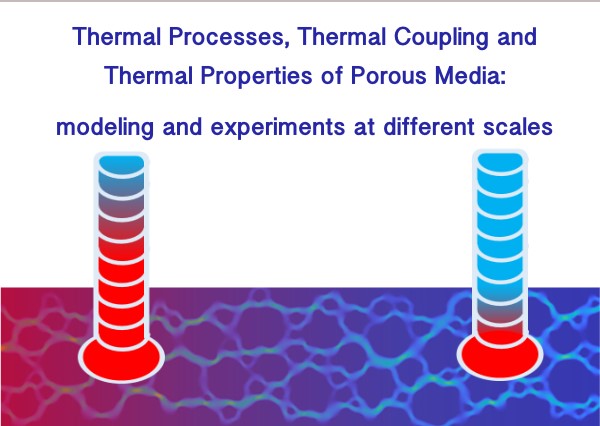
- Huijin Xu - Shanghai Jiao Tong University, China
- Peng Xu - China Jiliang University, China
- Ruina Xu - Tsinghua University, China
- Yingfang Zhou - University of Aberdeen, UK
Thermal processes (including fluid-solid-thermal coupled ones) in porous media play an important role in numerous applications, including unconventional energy resources, environments, industrial materials such as isolators, aerospace and medical engineering. At the same time, it is of great importance to obtain thermal properties of porous media (e.g. conductivity) and the fluids at different scales, including micro and macro scales. The scope of this mini-symposia covers all studies which deal primarily on thermal aspects of porous media, thermal coupling, and property measurements in a multidisciplinary nature of analyses, modeling, experiment and field studies. We also include challenging fields such as geo-energy and geo-environment systems as well as insulation materials under extreme conditions.
(MS18) Innovative Methods for Characterization, Monitoring, and In-Situ Remediation of Contaminated Soils and Aquifers
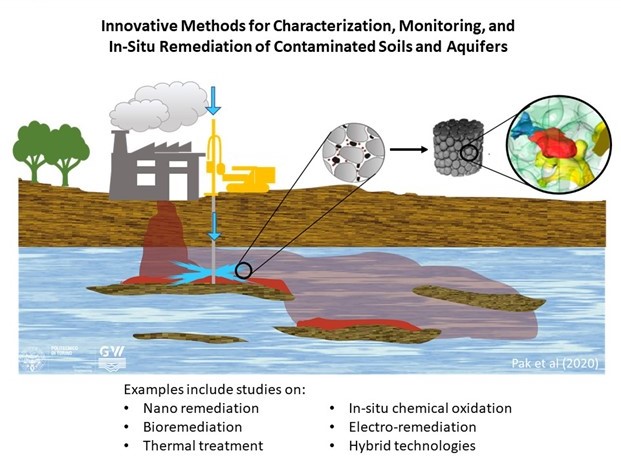
- Carlo Bianco - Polytechnic of Turin, Italy
- Jaime Gomez-Hernandez - Universidad Politécnica de Valencia, Spain
- Tannaz Pak - Teesside University, UK
The efficacy of methods used for the characterization, monitoring, and remediation of contaminated soils and aquifers is unavoidably associated with the multi-scale properties of unsaturated and saturated zones. The development of innovative, and cost-effective methods for (i) mapping and monitoring polluted soils and surface emissions from spread pollutants, and (ii) in situ soil and aquifer remediation rely on information resulting from lab-, pilot-, and field-scale tests along with process modeling and simulation in porous media. Toward this direction, earlier and new knowledge concerning the multiphase and multi-component transport and reactive processes in multi-scale porous media must be handled in the light of interdisciplinary approaches (e.g. geology, chemistry, chemical engineering, physics, etc.) for understanding, analyzing, and modeling the complex processes involved. For this mini-symposium, we invite experimental and theoretical contributions that focus on the development, application, and interpretation of innovative techniques for the characterization / monitoring / in situ remediation (e.g. biological treatment, thermal treatment, advanced oxidation, electro-remediation, nanoremediation, hybrid technologies, etc.) of soils and aquifers at a broad hierarchy of scales ranging from the pore- to the field-scale.
(MS19) Elastic, electrical, and electrochemical processes and properties in porous media
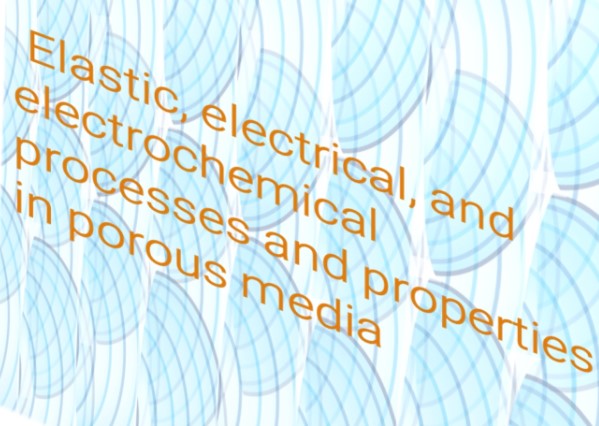
- Rukuan Chai - University of Alberta, Canada
- Pablo Garcia Salaberri - Universidad Carlos III de Madrid, Spain
- ChungHyuk Lee - Ryerson University, Canada
- Qingyang Lin - Zhejiang University, China
- Yuqi Wu - China University of Petroleum (East China), China
Wave propagation, electron transport and electrolyte flow through porous media are found in many fields of science and technology, ranging from petroleum, chemical and construction engineering, to cell, earth and materials science. Thus, it is of great significance to understand elastic, electrical and electrochemical processes and properties in porous media. In this mini-symposium, attention is devoted to new developments in characterization methods and modeling techniques addressing state-of-the-art challenges in elasticity, electrical engineering and electrochemistry in porous media. Research includes fundamental work of pore-scale transport processes at the microscopic scale as well as the study of effective properties at the macroscopic scale. Thus, this mini-symposium aims to provide a venue for scientists and engineers to discuss recent advances in wave propagation, electron transport, electrolyte flow, and electrochemical processes in porous media, elastic and electrical properties of porous materials, and their applications in diverse fields. The list of topics includes, but is not limited to, theoretical and computational modeling, and in-situ and ex-situ experiments.
(MS20) Biophysics of living porous media: theory, experiment, modeling and characterization
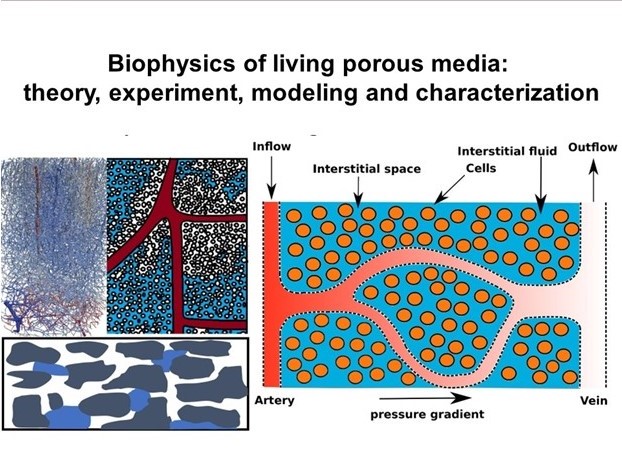
- Tobias Koeppl - Technische Universität München, Germany
- Dominik Obrist - University of Bern, Switzerland
- Fred Vermolen - Hasselt University, Belgium
This minisymposium will focus on modeling and characterization of living porous systems (plants, tissues, cell agglomerates, organs, etc.) and related applications in engineering sciences, biology and medicine. Within this context, theoretical and experimental approaches based on porous media mechanics are playing a pivotal role on understanding the behavior of such reactive multiphase systems. Mechanistic modeling allows decrypting coupling between involved physical phenomena and the role of biological and chemical factors, central in living systems. This is a wide research field because structure, function and evolution of living porous medium systems are studied at a broad spectrum of scales: from cells to tissues and from organs to the entire living system and its interaction with the environment. Discussed topics include (but not limited to): tissue and organ poromechanics, tissue remodeling, mass transport and multiphase flow in living systems, multiphase modeling of biological tissues, tumor growth modeling, transport oncophysics, drugs delivery. We welcome contributions from all applications of living porous media.
(MS21) Non-linear effects in flow and transport through porous media
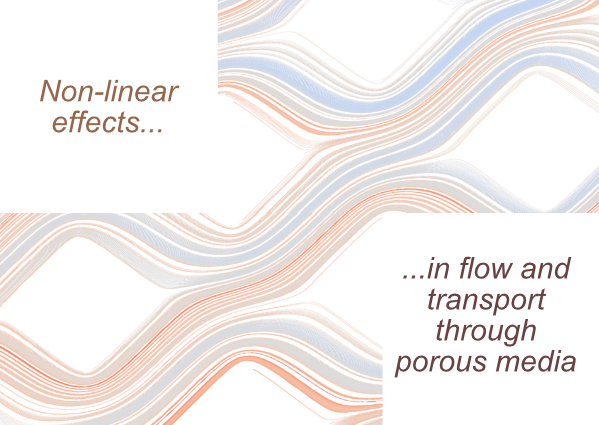
- Alberto Guadagnini - Politecnico di Milano, Italy
- Hossein Hejazi - University of Calgary, Canada
- Yves Méheust - Université Rennes, France
- Mohaddeseh Mousavi Nezhad - University of Warwick, UK
Non-linear effects impacting fluid flow and chemical transport in porous media play a key role for processes occurring in several disciplines and in a variety of applications. On the one hand, examples of situations where the role of inertial terms in the Navier-Stokes equations is important include flows in highly permeable porous media such as river sediments, canopies, urban canyons or near well injections, catalytic beds, nuclear reactors. On the other hand, non-Newtonian rheologies involve non-linear or history-dependent relationships between stress and shear rate and are relevant for applications such as the use of polymer slugs for remediation of NAPL-polluted aquifers, enhanced oil recovery (EOR), or in the general context of subsurface characterization. Non-Newtonian fluid flows also occur in the context of the remediation of vadose zone environments; clay-based drilling muds (with direct implication on fracture characterization while drilling); and suspensions of solid particles for soil remediation or fracking. They are also important in many industrial applications such as polymer matrix composites.
The non-linear effects associated with such flow and transport conditions, combined with the complexity of the multi-scale heterogeneous structure for instance in the case of the subsurface, introduce remarkable challenges to modeling macro-scale system behavior. Otherwise, a detailed depiction of pore-scale flows and the investigation of the relationship between the theoretical descriptions at various scales of the problem can benefit from detailed microscale simulations (molecular or quasi-molecular, meso-scale approaches, effective boundary conditions such as slip conditions for polymer flows, continuum approaches) performed in realistic pore spaces. Advances in the field further require the development of experiments at the corresponding scales (pore, Darcy, field), along with novel visualization and imaging techniques (e.g. PIV, PTV, laser fluorescence imaging, photon microscopy, X-ray tomography). In terms of transport, it is documented that mixing processes in non-linear flows take place at the small scales, which makes the quantification of the related physical and chemical processes significantly challenging. In this context, the upscaling of pore/fracture scale results in terms of macro-scale models and effective properties challenges all upscaling techniques and homogenization paradigms, which must be adapted and improved.
In this mini-symposium we seek to address the way non-linear effects impact flow and transport patterns in porous media or fractured porous media, and the way current knowledge can be transferred onto applications. We welcome contributions addressing the impact of non-linearities in the flow equations on single- or multiphase flows and transport processes in porous media, based on theoretical/numerical studies, laboratory experiments, or macro-scale/field investigations, over a broad range of scales and applications. Discussions on modern modeling and investigation strategies are also encouraged.
(MS22) Manufactured Porous Materials for Industrial Applications
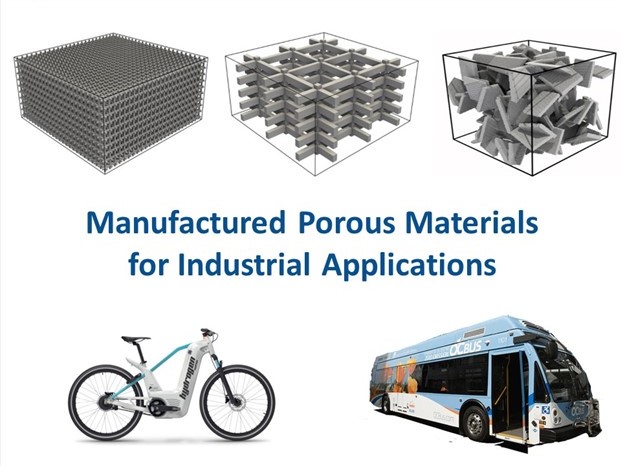
- Senyou An - Imperial College London, UK
- Oleg Iliev - Fraunhofer ITWM, Germany
- Vahid Niasar - University of Manchester, UK
- Mohammadjavad Shokriafra - University of Manchester, UK
Porous materials are key components of many industrial applications such as fuel cells, electrolysers, electrodes in electrochemical batteries, membrane and separation technology, paper and filters. Depending on the application, the porous materials are designed, fabricated or modified to deliver specific objectives. Porous media science applicable to physical and chemical processes in geosystems can be shared with other engineering applications.
There have been progressive technologies to improve the design, characterisation and manufacturing the synthetic porous materials.
This minisymposium aims to provide the platform for researchers to exchange knowledge about their challenges, achievements and research questions related to design, characterisation and fabrication of porous materials for the above-mentioned disciplines.
Showcases of success or challenges are encouraged to be presented to demonstrate the capabilities or gaps in fundamental porous media knowledge.
(MS23) Special Session in honor of Signe Kjelstrup
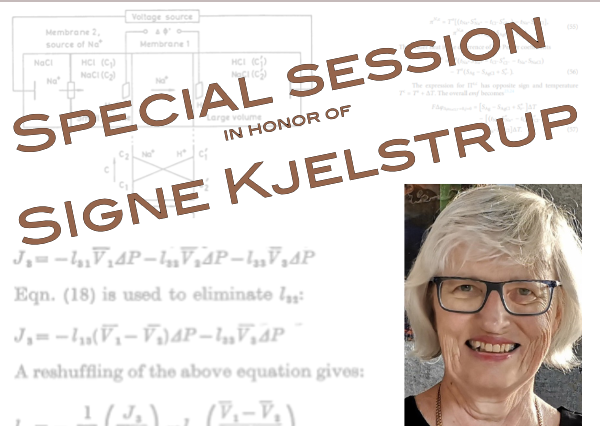
- Bjørn Hafskjold - PoreLab, NTNU, Norway
- Øivind Wilhelmsen - PoreLab, NTNU, Norway
- Alex Hansen - PoreLab, NTNU, Norway
The session is in honor of Professor Signe Kjelstrup, the 2022 recipient of InterPore’s Honorary Membership Award. Signe is a renowned scientist in equilibrium and non-equilibrium thermodynamics and their applications to porous media and nanoscale systems. Her work is widely known, not only from her many scientific papers, but also from several books including specialized monographs, a best-selling book for engineering students, and a new book on nanoscale non-equilibrium thermodynamics. We welcome contributions that are closely linked to Signe’s research within thermodynamics and transport properties of fluids in porous media, including theory, simulations, and experiments. Applications to single- and multiphase transport, low-grade thermal energy, fuel cells, nano-confined systems, and biological membranes are some examples of topics that may be included, but given Signe’s wide field of interests, other topics are also welcome. The symposium will focus on new insight and understanding of the physics and chemistry of porous media, such as effects of confinements, surfaces, and scale.







